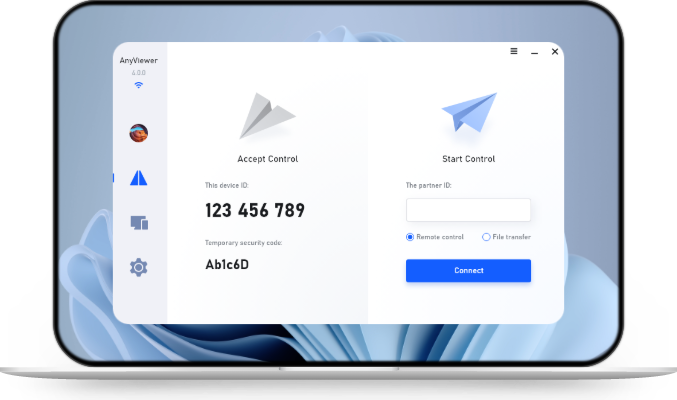3 Easy Ways to Screen Share in Windows 10/11
How to screen share in Windows? Here in this post, we will provide you with 3 ways to remote screen sharing Windows 11/10. You can share screen in Windows 11/10 using professional software or its built-in tools, keep reading to learn more!
How do I share my screen on Windows 10?
“Hi, as the topic says, I want to know how can I screen share in Windows 10. I will hold a meeting tomorrow and I need to share my screen with my colleagues. Any idea? Thanks.”
- Question from a user
What is screen sharing on Windows PC?
Windows screen sharing is a technology that allows users to display their computer, tablet, or smartphone screen to another person or group in real time. This feature is commonly used for remote collaboration, presentations, troubleshooting, and training sessions.
Key Uses of Screen Sharing Windows:
- Remote Support – IT professionals can view and control a user's screen to diagnose and fix issues.
- Online Meetings & Presentations – Businesses use screen share on PC to showcase slides, documents, or software during virtual meetings.
- Collaborative Work – Teams can share screen on PC to brainstorm ideas, review projects, and work together efficiently.
- Education & Training – Teachers and trainers use Windows screen share to demonstrate lessons or guide students through software.
How to screen share in Windows 10/11 [2 cases]
At work, you might occasionally need to take control of someone’s screen or share your screen with others. You might, for instance, need to provide a presentation, assist a client with a software issue, obtain technical support, etc.
With these circumstances, a Windows screen-sharing tool is very necessary for you. In this part, we will discuss how to share screen on Windows 10/11.
Case 1. Share screen in Windows with professional software
To share screen in Windows 10/11, we first recommend you choose a professional tool like AnyViewer, which has more functionality than Windows native tools.
AnyViewer supports one-click screen sharing as well as other specific use cases such as obtaining unattended remote access and transferring files between devices. Even better, the software provides an entirely unrestricted free version. Therefore, if you need to share your screen for remote assistance or access, AnyViewer is the best option.
Simply install the program on both devices, then follow the instructions to share your screen.
Step 1. On the remote computer, click Log in from the left pane, and click Sign up.
Step 2. When you successfully log in to AnyViewer, you can see your assigned devices of the same account.
Step 3. On the local computer, log in to the same account, go to Device, select the computer you want to view the screen and click View the screen.
Then you can see the screen of the remote computer. Please notice that remote control operations are not allowed in View the screen session, but other operations are still available, for example, you can change screen resolution, transfer files, etc.
If you want to view and remotely control someone’s screen, back to the Device interface and click One-click control.
Bonus tip: Share multiple screens on Windows PC via AnyViewer Screen Wall
If you want to share multiple Windows PC screens simultaneously and remotely on your PC, AnyViewer offers a powerful function called Screen Wall to display all the remote screens in a single window in real time. Here's how to screen share PC screens remotely.
Step 1. Go to the Device interface and click your local PC. Then choose the Screen wall function.
Step 2. Click the Create screen wall button in the pop-up window.
Step 3. Select the remote devices from the devices list, and click Add to add these devices to your Screen Wall.
Step 4. Open your Screen Wall and all the real-time actions of the remote screens will be displayed on your PC.
Case 2. Share screen in Windows 11/10 using native tools [2 options]
If you don’t want to download additional tools, there are two ways to perform screen share in Windows 10/11: Use Quick Assist or turn on screen mirroring.
✍️Option 1. Quick Assist
With Quick Assist, you can let another device view your screen with or without taking full control.
Step 1. Search “Quick Assist” in the start menu, and Open it.
Step 2. On the local computer, click Assist another person.
Step 3. Enter your Microsoft account, click Next, enter the password, and click Sign in.
Step 4. Then you will get a security code available for 10 minutes, please send it to the remote side that needs to share the screen.
Step 5. On the remote computer, enter the security code under Code from assistant, and click Share screen.
Step 6. Select a sharing option based on your situation, then click Continue > Allow.
✍️Option 2. Screen Mirroring
Screen mirroring for Windows allows you to project your screen to a nearby device or project a screen nearby to your device. It works on devices compatible with Miracast.
►Check whether or not your device is Miracast-compatible
Press Win + P, if you see the option “Connect to a wireless display,” your computer is Miracast compatible and you can perform screen mirroring between devices.
Step 1. On the remote computer, open the Action Center from the right bottom corner.
Step 2. Click Connect to see the nearby devices.
Step 3. Click the device you want to project to.
Step 4. Tick the box if you allow the local device to control your screen.
Who can use screen share for Windows?
Screen sharing PC is a versatile tool that can be used by a wide range of individuals and organizations, including:
- Businesses & Professionals: Used for virtual meetings, presentations, and remote collaboration.
- IT Support & Help Desk Teams: Helps troubleshoot and fix technical issues remotely.
- Teachers & Students: Enhances online learning by allowing instructors to share lessons and demonstrations.
- Freelancers & Remote Workers: Enables seamless communication and project collaboration with clients and teams.
- Healthcare Providers: Used in telemedicine for remote consultations and explanations.
- Gamers & Content Creators: Allows live streaming and sharing gameplay or tutorials.
- Friends & Family: Helps with tech support or sharing media during video calls.
Wrapping Up
This post introduces how to perform screen share in Windows 10/11. You can use third-party software or Windows built-in tools to do this job. Unfortunately, Windows native screen-sharing tools have several limits. For example, you can not chat, transfer files, etc. So we recommend you use AnyViewer with more functionality.

